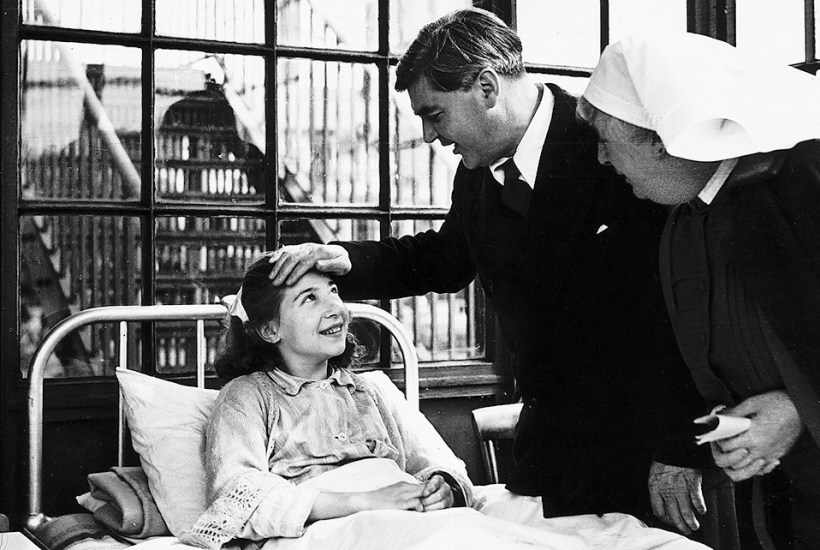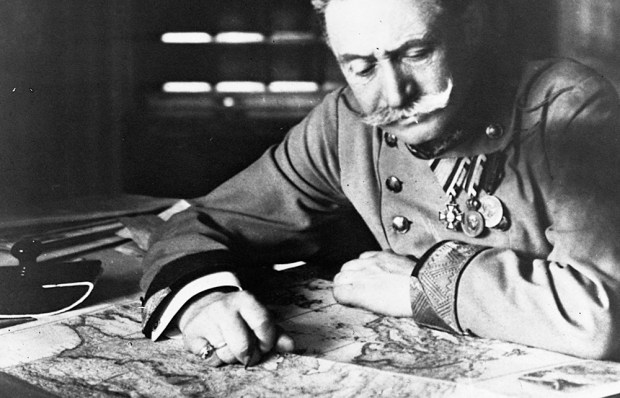‘Of course I support the NHS. Everybody supports the NHS, or says they do,’ poked the comedian Frankie Boyle in one of the many campaigns promoting the health service. To admit you don’t believe in this national institution is as taboo as not caring about Britishness, about goodness, about people. The public is keen to find evidence for this collective belief. Nigel Lawson famously said that ‘the NHS is the closest thing the English have to a national religion’ – words which tend to be heard as praise. But his comment was laced with criticism. He continued, ‘with those who practise in it regarding themselves as a priesthood. This made it quite extraordinarily difficult to reform.’ As a Conservative chancellor of the exchequer in the 1980s, Lawson was clamping down on perceived overspending. He might have been of the mind that, like religion, the NHS had become the opium of the masses: soothing for our pains and fears, but also a significant liability for reckless use and unfinanceable demand.
Everyone knows it’s the 75th anniversary of the health service, due to the number of opinion pieces and new books about what it means to love the NHS, who ruined it and how to save it. As Isabel Hardman’s brilliantly written and engrossing biography of the NHS shows, it has never been on a firm economic footing nor enjoyed a golden era of running smoothly. In the first nine months after its inception on ‘the appointed day’, 5 July 1948, the NHS went 60 per cent over budget. Unmet need far exceeded predictions. Charges were swiftly introduced for dentures, hearing aids and spectacles, as well as for prescriptions in England. But the founding principles remained: a nearly comprehensive service, free for all when needed and funded through general taxation.
These principles were a deep bow in front of the randomness of life, which the destruction of the world wars had shown to be unbearable. Hardman underlines that the NHS was created not because world-leading healthcare didn’t exist in Britain – it certainly did for the rich – but because so many were unable to access it. Aneurin Bevan, the health secretary under Clement Attlee and founding father of the NHS, envisaged that ‘in place of fear’ the new service would remove the financial sting of falling ill. Thirty-two million people signed up and were suddenly eligible to have their chronic hernias and prolapses repaired, receive antibiotics and vaccinations and see a doctor who would come to know them.
The NHS grew in scale, complexity and admiration. ‘Britain’s “love” for the NHS is stated too often but examined too rarely,’ writes Ellen Stewart, a social scientist at the University of Strathclyde, whose deeply thoughtful book analyses what the NHS actually is, beyond just another way to fund healthcare delivery. The idea for How Britain Loves the NHS came to Stewart during Covid, when she felt a ‘dissonance’ shared by many as escalating crisis was accompanied by rainbows and all that clapping. She examines the ways in which the public has campaigned and volunteered for, donated to, and rationed its use of services in order to ‘protect the NHS’. What emerges is an institution requiring care as well as providing it.
As Stewart emphasises, though, the NHS is not a unified system. It’s a nationally devolved network of disjointed organisations with their own managers, standards, practices and outcomes. Sometimes trusts have little to do with each other besides their Pantone 300 blue branding. Private companies dovetail in, as do online offerings, research institutes, charitable bodies and social care. Stewart’s work brings to life this patchwork and stresses that the overarching NHS brand has proved resilient despite failings in local trusts. While ‘satisfaction’ with the NHS dips in reaction to scandals and media headlines, ‘solidarity’ remains strong. Last year, nine in ten Brits still believed in, and were committed to, its founding principles.
The firewall between solidarity and dissatisfaction is evident in Critical, a manifesto of sorts by Julia Patterson. No longer a practising doctor but a devoted advocate, she shares her journey from frontline worker to campaigner, radicalised in the fires of the first junior doctors strikes of 2016. She founded EveryDoctor, which gained visibility during Covid for its important work highlighting PPE shortages and helping hundreds of clinicians to cope with the ‘moral injury, stress and trauma’ of the pandemic.
For Patterson, ‘the NHS is broken’, having been ‘wilfully dismantled’ by Westminster and private companies. To her mind, there have been ‘no bounds to the betrayal’ by politicians over the past four decades. She blames the Conservatives for introducing an internal marketplace to the NHS in the 1980s, while Labour is called out for seeking private financing of NHS facilities which led to spiralling debt in the early 2000s that has yet to be paid off. Patterson is unhappy that ‘many leaders in UK healthcare have also stayed silent when they could, and should, have spoken up about poor policy decisions’. She calls for full public ownership of the NHS, free from private interests, no volunteers, and a ban on outsourcing (for example to Specsavers, which gets an unexpected roasting). Critical is polemical but not unreasonable, though it falters in its lack of illustrative stories and strategic analysis.
While Patterson has lost faith in politicians, Hardman thinks they’re largely well-intentioned. She challenges the widespread idea that the Tories can’t be trusted with the NHS, using examples that include Margaret Thatcher and Enoch Powell. Fighting for Life is far more compelling when standing up for patients, from the appalling abuses of unmarried women forced to give up their babies in the mid-20th century, to the elderly, ‘left sitting in their own faeces’, with food placed out of reach and their cries ignored, during the early 2000s in Stafford Hospital. Of particular power is her retelling of James Titcombe’s tenacity after his baby son Joshua died, owing to clinical failings at Morecambe Bay in 2008. Thorough investigation by the trust was refused. Hardman perfectly captures the way NHS management tends to engage with those they disagree with: ‘He was treated as though he was merely a father driven mad by grief, not someone who had a point.’
Whether you agree with Patterson’s political disenchantment or Hardman’s even-handedness, it’s clear that when Labour left office in 2010, patients and employees had a service that was flawed but functioning. This cannot be said of the NHS’s current crisis. Waiting times for 7.6 million in England are the longest they have been since records began. Five hundred people are dying every week due to delays in urgent and emergency care. South of the border, NHS vacancies stand at 130,000. Medics in England are committed to indefinite strikes. The official winter plan this year seems to be ‘suck it and see’. AI rescuing the NHS from these struggles is a fantasy. (If you listen very closely at 8:01 Monday to Friday, you may hear thousands of desktops in NHS facilities across the country loading retired versions of Windows.) Private healthcare is booming, with 10 per cent of all UK adults seeking their services last year. This is the Conservatives’ legacy.
When we say the NHS is unaffordable, we mean that the better off think supporting the healthcare of poorer people is too expensive. It feels good to say we love the NHS, but it’s unearned comfort unless we are willing to invest in it. Good healthcare will cost more than the UK has been used to paying, significantly less than the G7 average, 20 per cent less than France and 36 per cent less than Germany.
All three of these books want the NHS to recover (and don’t seem to be saying that just to keep their readers happy). But they have very different visions of what recovery will look like. For Patterson it’s non-negotiable public ownership with a ‘Make the NHS Great Again’ nostalgia. Stewart is optimistic that affection tempered with realism could be a force for change. Hardman is focused on outcomes, wanting a service that serves patients rather than promises. Writing about the NHS is itself an act of care, helping to inform the public about a different NHS that we could demand from our leaders, and that we would be willing to trust with our lives.
Got something to add? Join the discussion and comment below.
Get 10 issues for just $10
Subscribe to The Spectator Australia today for the next 10 magazine issues, plus full online access, for just $10.
You might disagree with half of it, but you’ll enjoy reading all of it. Try your first month for free, then just $2 a week for the remainder of your first year.














Comments
Don't miss out
Join the conversation with other Spectator Australia readers. Subscribe to leave a comment.
SUBSCRIBEAlready a subscriber? Log in